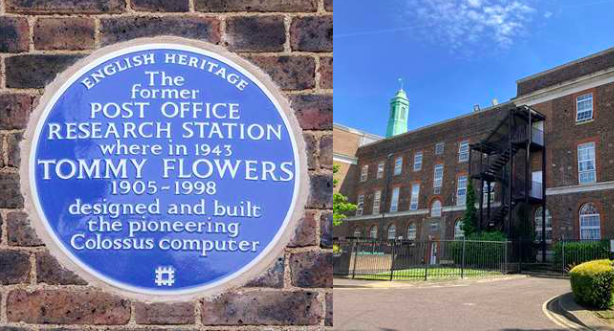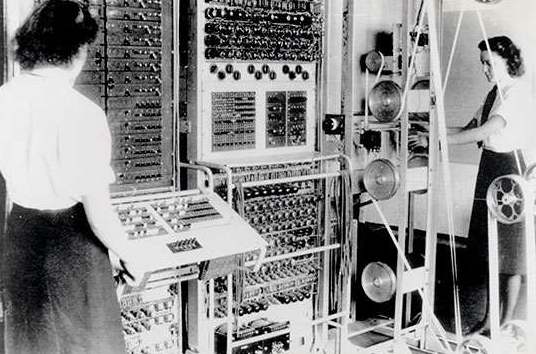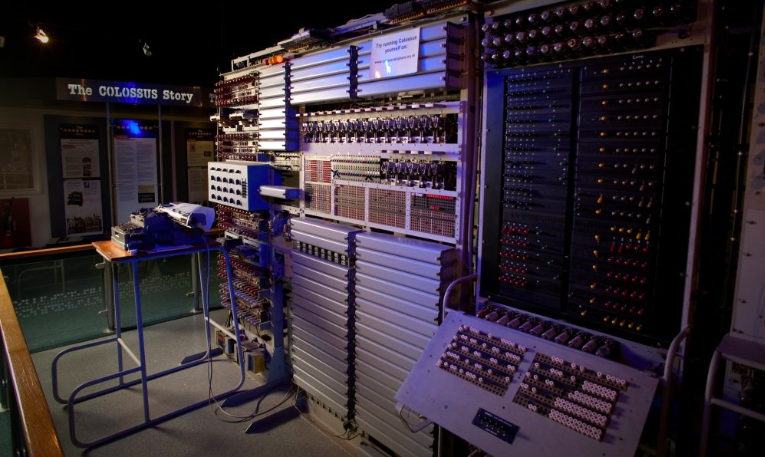
26 September 2023
Earlier this month, a well-deserved blue plaque was erected at the former Post Office research station at Dollis Hill, London to honour Tommy Flowers designer of the Colossus computer, writes Adrian Murphy.
Tommy was born in 1905 and died in 1998, aged 92, so it was not possible for us to include an interview of him in our archive as we launched in 2015. However, he is the first person mentioned in our History of IT feature, acknowledging his significance in the development of digital computers.

We say that: “During the Second World War, the machines that broke the Enigma codes and helped to end the war were ingenious computers but designed for a specific purpose and not adaptable to other functions.
“Colossus, built for code-breaking (the Lorenz-encrypted ‘Tunny’ messages), was kept secret for many years but ultimately credited as a major step forward. The brainchild of Tommy Flowers, it was the world’s first programmable digital computer, albeit without a stored programme facility.”

However, throughout our archive of 230 interviews and numerous features, there are many mentions of Tommy and Colossus, and one of our interviewees worked alongside him as a teenager.
Professor Peter Dobson OBE, took a scholarship at the GPO in 1961, aged 18, to prepare him for university and remembers how Tommy used his computer knowledge to set up the first electronic telephone exchange.
“At the time I thought this was just the sort of person one would expect to be in a leading research laboratory,” says Peter.
“I knew very little at the time about Colossus, in fact nobody did, he didn’t talk about Colossus. What was spoken to us was about the possibilities of using the technology that was used in computing machines, as he put it, to run a telephone exchange.
“Ultimately that did lead to the creation of the first electronic telephone exchange at Highgate which did not use valves but was based on transistors.”
The Blue Plaque, erected on 6 September, now marks the former research station where Tommy designed Colossus in 1943. Within a fortnight of its transfer to Bletchley Park, it had been used to decipher the most sophisticated German codes, nicknamed ‘Fish’ and ‘Tunny’.

English Heritage’s recognition is fitting as for many years Flowers was largely an unsung hero for his vital war work and key role he made to the development of the modern computer.
Of course, this was due to the secrecy surrounding Bletchley Park. However, he knew that he had produced a truly innovatory machine. Many years later after the war, he said: “Colossus bore about as much resemblance to a modern computer as Stephenson’s Rocket locomotive did to the Royal Scot, but it embodied all the basic features.”